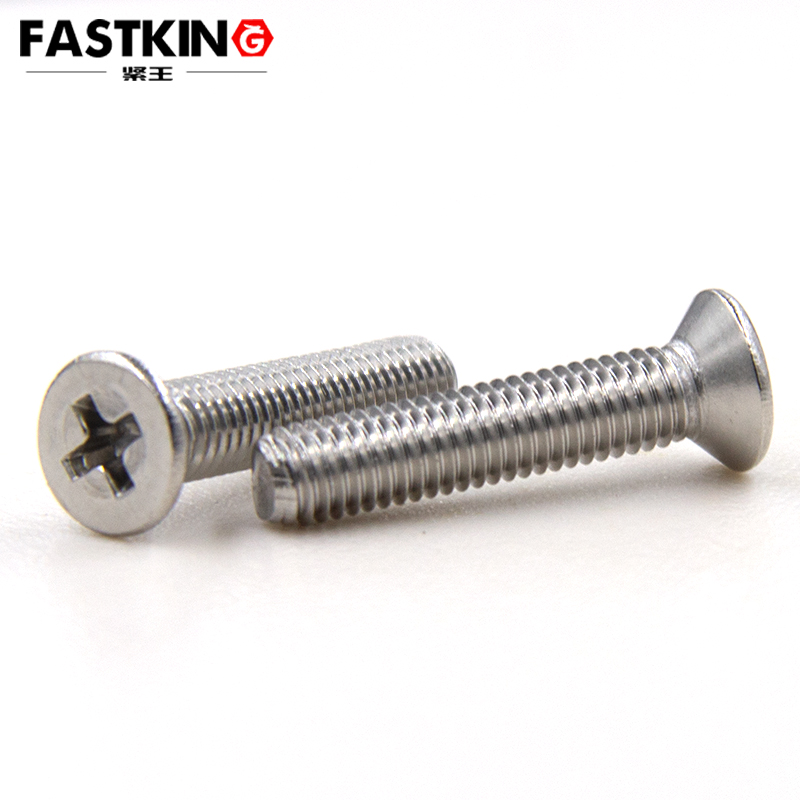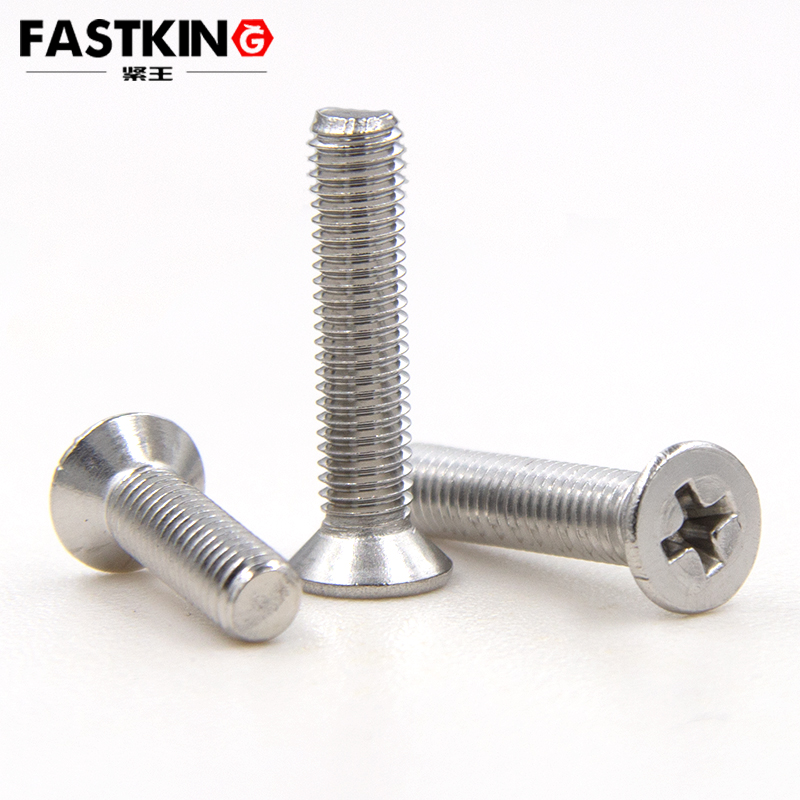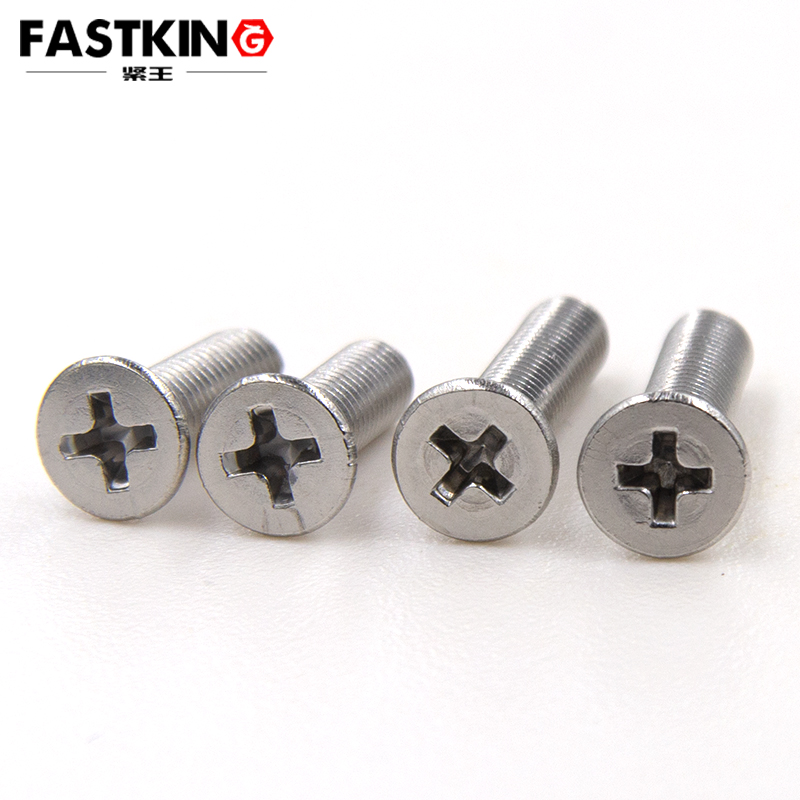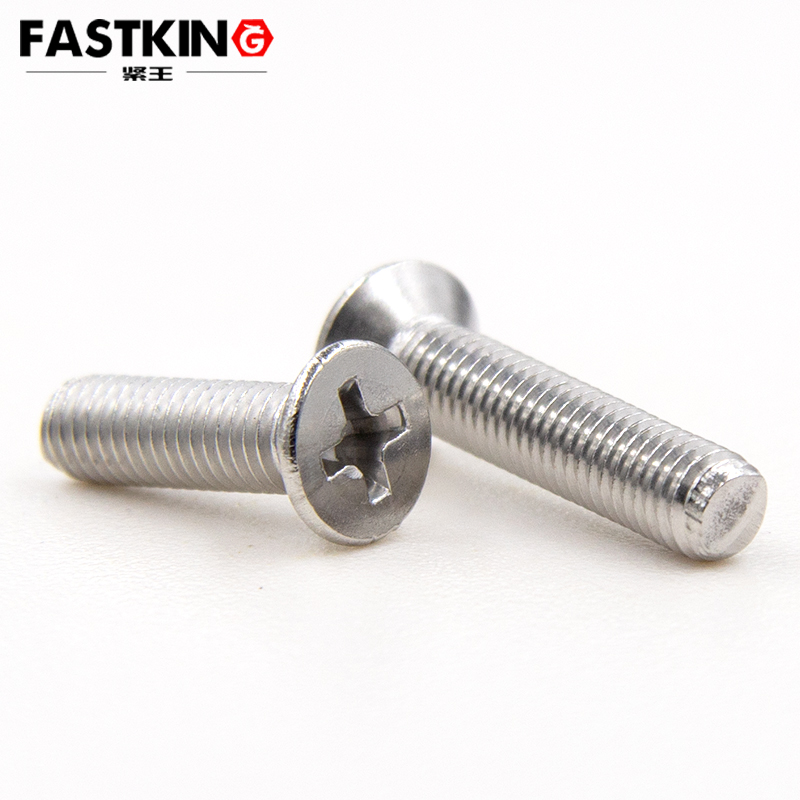
Countersunk Cross-Head Electronic Miniature Screws: Usage and Application Scenarios
In modern industrial and electronic manufacturing, countersunk cross-head electronic miniature screws have become indispensable fasteners due to their unique design and wide range of applications. This article will provide a detailed introduction to the usage and application scenarios of these screws.
Usage of Countersunk Cross-Head Electronic Miniature Screws
1. Selecting the Right Tool
The installation of countersunk cross-head screws requires the appropriate tool, typically a cross-head screwdriver or an electric screwdriver. It is essential to choose a screwdriver size that matches the cross-slot on the screw head to avoid damage during installation.
2. Preparation Before Installation
Before installation, ensure the precision of the screw hole. The head of a countersunk screw is usually conical at 90°, so the installation hole must be machined into a corresponding countersunk hole to ensure that the screw head is flush with the installation surface. If the hole's taper is inaccurate, the screw may not fully sink, affecting appearance and functionality.

3. Installation Steps
- Align the screw with the hole, ensuring it is perpendicular to the installation surface.
- Insert the screwdriver gently into the cross-slot of the screw head and rotate evenly until the screw is fully tightened.
- If using an electric screwdriver, pay attention to controlling the tightening torque to avoid damaging the screw or the installed component due to excessive tightening.
4. Notes for Attention
- Keep the screwdriver perpendicular to the screw head during installation to prevent slipping or damage to the screw head.
- For applications requiring repeated disassembly, consider using high-strength and corrosion-resistant materials, such as stainless steel or PEEK.
- Regularly inspect installed screws to ensure they have not loosened due to vibration or other external forces.

Application Scenarios of Countersunk Cross-Head Electronic Miniature Screws
1. Electronics Assembly
Countersunk cross-head screws are widely used in electronics, especially in applications where the screw head needs to be hidden. Their compact design and corrosion resistance make them ideal for connecting electronic components, PCB boards, and enclosures. For example, in precision devices like smartphones and computers, countersunk screws ensure a secure connection of internal components while maintaining a neat appearance.
2. Mechanical Equipment
In mechanical devices, countersunk cross-head screws are used to secure various components, such as motor housings and sensors. Their high strength and wear resistance meet the demands of industrial environments. For example, 304 stainless steel countersunk screws are widely used for connecting engine parts and mechanical frames.
3. Construction and Furniture Industry
In construction and furniture manufacturing, countersunk screws are used to fix components like door frames, window frames, and drawer slides. Their countersunk design allows for a flush surface, enhancing aesthetics. Additionally, stainless steel countersunk screws offer good corrosion resistance, making them suitable for damp environments.
4. Automotive Manufacturing
In the automotive industry, countersunk cross-head screws are used to secure internal components of vehicles, especially in areas requiring vibration resistance and high-temperature tolerance. Their countersunk design reduces air resistance, enhancing vehicle performance.
5. Telecommunications and New Energy Equipment
In telecommunications base stations, photovoltaic equipment, and other new energy fields, countersunk cross-head screws are used to fix external devices and structures. Their corrosion resistance and high strength enable long-term stable operation in harsh environments.
Conclusion

Countersunk cross-head electronic miniature screws, with their compact design, corrosion resistance, and ease of installation, have become ideal fasteners for multiple fields, including electronics, machinery, construction, automotive, and new energy. By mastering the correct installation methods and selecting appropriate materials, their performance advantages can be fully utilized to meet the demands of various complex working conditions. As industrial technology continues to evolve, the application scope of countersunk screws will further expand, providing more reliable fastening solutions for modern manufacturing.
